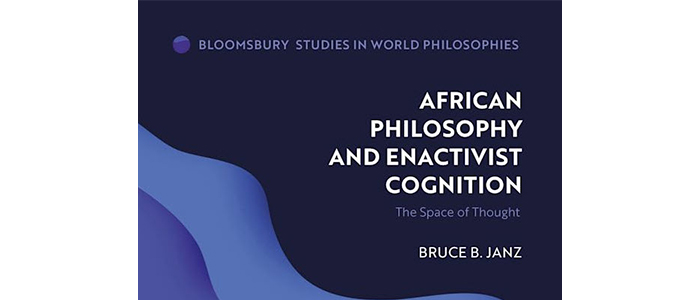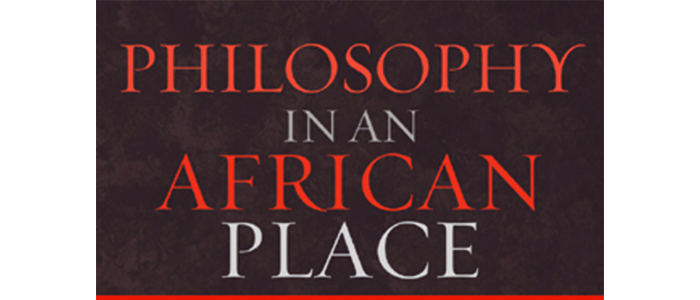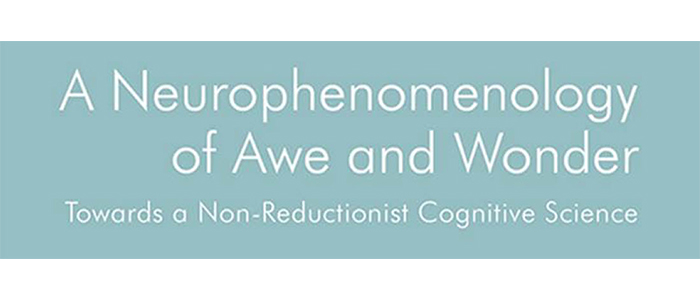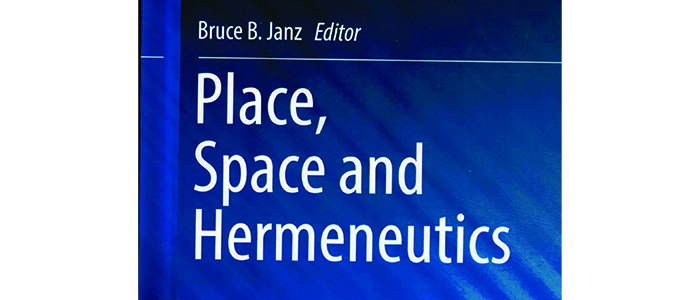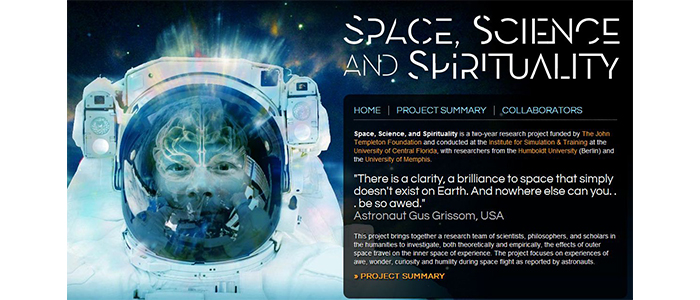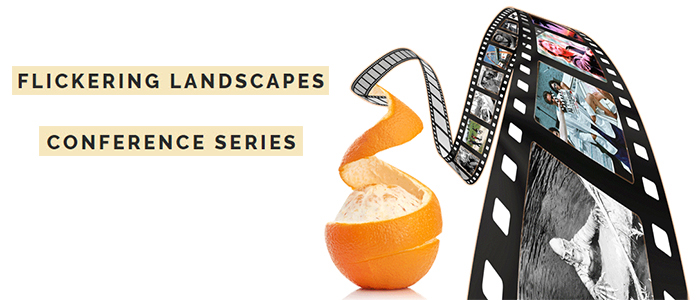Websites
- Anthropology and the Environment
- Anthropology of Space and Astronomy (French)
- Anthropology Resources on the Internet
- Australia Place Research Network
- Architecture + Habitat Anthropology
- Citoyenneté et espace public/Citizenship and Public Space: Le Congrès de la Société Canadienne d’Anthropologie de 2004/ 2004 Conference of the Canadian Anthropology Society (University of Western Ontario, London, Ontario) – 6-9 May 2004
- Implosion: Architectural Anthropology
- Late Prehistoric Architecture of the North of Portugal
- Society for Urban, National, and Transnational/Global Anthropology (SUNTA)
- Structure and Meaning in Human Settlements – conference
- Terra Lingua: Partnerships for Linguistic and Biological Diversity
Home Pages of People in Place Research
Courses and Programs
• The Archaeology of Space and Place (I.T. Thorpe, E. Scott, C. Gerrard)
• Interpreting Cultural Space (John McCall)
• Landscape: Theory and Interpretation (Adam Smith)
Journals
• City and Society
• Journal of Political Ecology: Case Studies in History and Society – On-line content, with articles and book reviews on anthropology, environment, and place.
Email Discussion Lists
• Anthropology of Space and Place (join list) Archives: http://listserv.temple.edu/archives/space-and-place.html
General Bibliography
Go to work by (this link may not include all work available by this author; use the search engine above for more):
• Marc Augé
• Setha Low
As a street is a place that a walker transforms into an active space, or as a text is a locus of organized signs obeying the logic of a proper place that every reader can change into an intellectual or aesthetic space of learning and enjoyment, so the “object” of an anthropological curiosity (a culture, its institutions, rituals, or mythical narratives) constitutes a place with its proper rules that the anthropologist’s activity and interpretation transform into a new space.
V. Y. Mudimbe, Parables and Fables
n.a. “Taphonomies of Topography: from the death of ‘place’ to its hyphenated apotheosis” http://ssocial.wits.ac.za/anthro/ a review of:
1. Augé, Marc. Non-places: introduction to an anthropology of supermodernity. Translated by John Howe. London: Verso, 1995.
2. Pellow, Deborah, ed. Setting Boundaries: The Anthropology of Spatial and Social Organization. Westport: Conn.: Bergin and Garvey, 1996.
3. Rotenberg, Robert. Landscape and Power in Vienna. Baltimore, MD: The Johns Hopkins University Press, 1995.
4. Rutheiser, Charles. Imagineering Atlanta: The Politics of Place in the City of Dreams. Verso Books, 1998.
Alonso, Ana Maria. “The Politics of Space, Time & Substance: State Formation, Nationalism and Ethnicity.” Annual Review of Anthropology 23 (1994): 379-405.
Al-Zubaidi, Layla. “Urban Anthropology” http://www.indiana.edu/~wanthro/URBAN.htm
Amerlinck, Mari-Jose. “Anthropological Approaches to Landscape.” Current Anthropology 39:5 (December 1998): 738-740.
Appadurai, Arjun. “Introduction: Place and Voice in Anthropological Theory.” Cultural Anthropology 3:1 (1988): 16-20.
Appadurai, Arjun. “”Putting Hierarchy in Its Place.” Cultural Anthropology 3:1 (1988): 36-49.
Ardner, Shirley. Women and Space: Ground Rules and Social Maps. New York: St. Martin’s Press, 1981.
Augé, Marc. Non-Places: Introduction to an Anthropology of Supermodernity. London & New York: Verso Books, 1995.
See entry #1, above.
Borén, Thomas. “Icke-platser.” Review of Marc Augé, 1995: Non-places: Introduction to an Anthropology of Supermodernity. Verso: London. In Nordisk Samhällsgeografisk Tidskrift No. 27 (1998).
Buchanan, Ian. “Non-Places: Space in the Age of Supermodernity” Social Semiotics 9:3 (1999): 393-398.
Collins, Samuel. “Head Out On the Highway”: Anthropological Encounters with the Supermodern. A Review of Augé, Marc. 1995. Non-places: introduction to an anthropology of supermodernity. Translated by John Howe. London: Verso. http://jefferson.village.virginia.edu/pmc/text-only/issue.996/review-2.996
Bahloul, Joëlle. “The memory house: time and place in Jewish immigrant culture in France.” In: Birdwell-Pheasant, Donna and D. Lawrence-Zúñiga. (eds.) House Life-space: Place, Space and Family in Europe. Oxford and New York: Berg Publishers, 1999: 239-249.
Basso, Keith. Wisdom Sits in Places: Landscape and Language Among the Western Apache. Albuquerque, NM: University of New Mexico, 1996.
Bender, B. Stonehenge: Making Space. Oxford: Berg, 1998.
Bender, Barbara. “Landscapes on-the-move.” http://www.sagepub.co.uk/journals/details/issue/sample/a017623.pdf
Bender, Barbara & M. Winer, eds. Contested Landscapes: Movement, Exile and Place. Oxford: Berg, 2001.
Benterrak, Krim, Stephen Muecke and Paddy Roe, Reading the Country: Introduction to Nomadology. Fremantle: Fremantle Arts Centre Press, 1984.
Binford, L. R. “The Archaeology of Place.” Journal of Anthropological Archaeology 1 (1982):5-31.
Bird, S. Elizabeth. “It Makes Sense to Us: Cultural Identity in Local Legends of Place.” Journal of Contemporary Ethnography 31:5 (October 2002): 519-547.
Birdwell-Pheasant, Donna and D. Lawrence-Zúñiga. (eds.) House Life-space: Place, Space and Family in Europe. Oxford and New York: Berg Publishers, 1999.
Birdwell-Pheasant, Donna. “The home “place”: center and periphery in Irish house and family systems.” in Birdwell-Pheasant, Donna and D. Lawrence-Zúñiga. (eds.) House Life-space: Place, Space and Family in Europe. Oxford and New York: Berg Publishers, 1999: 105-129.
Blu, Karen. “‘Where Do You Stay At?’: Homeplace and Community Among the Lumbee.” Feld, Steven and Keith H. Basso. Senses of Place. Santa Fe, NM: School of American Research Press, 1996.
Bognar, B. “The Place of Nothingness: The Japanese House and the Oriental World Views of the Japanese.” in Bourdier, J. P., Alsayyad, N., eds, Dwellings, Settlements and Traditions: Cross-Cultural Perspectives. Lanham, MD: University Press of America, 1989: 35-52.
Booth, Sally S. “Reconstructing sexual geography: gender and space in changing Sicilian settlements.” in Birdwell-Pheasant, Donna and D. Lawrence-Zúñiga. (eds.) House Life-space: Place, Space and Family in Europe. Oxford and New York: Berg Publishers, 1999: 133-156.
Bradley, Richard. Archaeology of Natural Places. London: Routledge, 2000.
Brody, H. Maps and Dreams: Indians and the British Columbia Frontier. London: Faber and Faber, 1981.
Bubandt, Nils. “Speaking of places: spatial poesis and localized identity in Buli.” In: Fox, James, ed. The Poetic Power of Place: Comparative Perspectives on Austronesian Ideas of Locality. Canberra: Dept. of Anthropology in Association with the Comparative Austronesian Project, Research School of Pacific and Asian Studies, Australian National University, 1997: 132-162.
Carmichael, David L., Jane Hubert, Brian Reeves, Audhild Schanche, eds. Sacred Sites, Sacred Places. London & New York: 1994.
Clarke, David, ed. Spatial Archaeology. Academic Press, 1977.
Cuisenier, Jean. “Territory and the Meaning of the Place.” http://jean.cuisenier.online.fr/europeans/territory.htm
David, Bruno & Meredith Wilson. “Re-reading the landscape: place and identity in NE Australia during the late Holocene.” In: Cambridge Archaeological Journal 9:2 (1999): 163-188.
De Boeck, Filip. “The rootedness of trees: place as cultural and natural texture in rural southwest Congo.” In: Nadia Lovell, ed. Locality and Belonging. London: Routledge, 1998: 25-52.
Dell’Orto, Alessandro. Place and Spirit in Taiwan: Tudi Gong in the Stories, Strategies and Memories of Everyday Life. London: Routledge, 2002.
Diaz, Vincente M. “Restless Na(rra)tives”. http://humwww.ucsc.edu/CultStudies/PUBS/Inscriptions/vol_5/vicentediaz.html
Dimitriadis, Greg. ‘”In the clique’: popular culture, constructions of place, and the everyday lives of urban youth.”
In: Anthropology and Education Quarterly 32:1 (2001): 29-51.
Donley, L. W. “House Power: Swahili Space and Symbolic Markers.” in I. Hodder, Symbolic and Structural Archaeology. Cambridge: Cambridge University Press, 1982: 63-73.
Dresch, Paul. “Segmentation: Its Roots in Arabia and Its Flowering Elsewhere.” Cultural Anthropology 3:1 (1988): 50-76.
Edmonds, M. Ancestral Geographies of the Neolithic: Landscapes, Monuments and Memory. London: Routledge, 1999.
Epstein, A. L. “Matupit revisited: social change, local organization and the sense of place.” In: Journal, Société des océanistes 86 (1988): 21-40.
Escobar, A. “Culture sits in places: Reflections on globalism and subaltern strategies of localization.” Political Geography 20:2 (2001): 139-174. http://www.sidint.org/programmes/politicsplace/PoliticsEscobar.PDF
Evans, Christopher. “Tradition and the cultural landscape: an archaeology of place.” In: Archaeological review from Cambridge 4:1 (1985): 80-94.
Evernden, Neil. The Natural Alien: Humankind and Environment. Toronto: University of Toronto Press, 1985.
Eves, Richard. “Seating the place: tropes of body, movement and space for the people of Lelet Plateau, New Ireland (Papua New Guinea).” In: Fox, James, ed. The Poetic Power of Place: Comparative Perspectives on Austronesian Ideas of Locality. Canberra: Dept. of Anthropology in Association with the Comparative Austronesian Project, Research School of Pacific and Asian Studies, Australian National University, 1997: 174-196.
Ferguson, James and Akhil Gupta. “Spatializing States:Toward an ethnography of neoliberal governmentality”
American Ethnologist 29:4 (2002):
Fernandez, James. “Andalusia on Our Minds: Two Contrasting Places in Spain As Seen in a Vernacular Poetic Duel of the Late 19th Century.” Cultural Anthropology 3:1 (1988): 21-35.
Frake, Charles. “Pleasant Places, Past Times, and Sheltered Identity in Rural East Anglia.” Feld, Steven and Keith H. Basso. Senses of Place. Santa Fe, NM: School of American Research Press, 1996.
Frey, Rodney in collaboration with the Schitsu’umsh. Landscape Traveled by Coyote and Crane: The World of the Schitsu’umsh (Coeur d’Alene Indians). University of Washington Press, 2001.
Fox, James, ed. The Poetic Power of Place: Comparative Perspectives on Austronesian Ideas of Locality. Canberra: Dept. of Anthropology in Association with the Comparative Austronesian Project, Research School of Pacific and Asian Studies, Australian National University, 1997.
Ewins, Roderick. Review of Fox, James, The Poetic Power of Place: Comparative Perspectives on Austronesian Ideas of Locality. The Australian Journal of Anthropology 10:1 (1999): 104-5. http://www.justpacific.com/pacific/papers/poetic~place.pdf
King, Victor. Review of Fox, James, The Poetic Power of Place: Comparative Perspectives on Austronesian Ideas of Locality. Sojourn: Journal of Social Issues in Southeast Asia 16:1 (April 2001): 176ff.
Fox, James J. “Genealogy and topogeny: towards an ethnography of Rotinese ritual place names.” In: Fox, James, ed. The Poetic Power of Place: Comparative Perspectives on Austronesian Ideas of Locality. Canberra: Dept. of Anthropology in Association with the Comparative Austronesian Project, Research School of Pacific and Asian Studies, Australian National University, 1997: 91-102.
Fox, James J. “Place and landscape in comparative Austronesian perspective.” In: Fox, James, ed. The Poetic Power of Place: Comparative Perspectives on Austronesian Ideas of Locality. Canberra: Dept. of Anthropology in Association with the Comparative Austronesian Project, Research School of Pacific and Asian Studies, Australian National University, 1997: 1-21.
Garner, Andrew. “Touring the natural world – on being in and out of place.” http://www.justpacific.com/pacific/papers/poetic~place.pdf
Ghannam, Farha. Remaking the Modern: Space, Relocation and the Politics of Identity in a Global Cairo. Berkeley: University of California Press, 2002.
Mills, Amy. “Review of Ghannam, Farha. Remaking the Modern. http://www.h-net.msu.edu/reviews/showrev.cgi?path=28711059500893
Gillespie, Susan D. “Maya “nested houses”: the ritual construction of place.” in Rosemary A. Joyce and Susan D. Gillespie, Editors. Beyond Kinship: Social and Material Reproduction in House Societies. Philadelphia : University of Pennsylvania Press, 2000: 135-160.
Goodall, Heather. “Mourning, Remembrance and the Politics of Place: A study in the significance of Collarenebri Aboriginal Cemetery.” http://www.transforming.cultures.uts.edu.au/goodall/mourning/index.html
Grahn, Lance. “The socioeconomic structure of place: Guajiro pastoralism and mythohistorical evolution in the eighteenth century.” In: Colonización Agrícola y Ganadera en América Siglos XVI-XVIII: Su Impacto en la Población Aborigen. Quito, Ecuador: Ediciones Abya-Yala, 1995: 127-151.
Greene, Sandra E. Sacred Sites and the Colonial Encounter: A History of Meaning and Memory in Ghana. Bloomington: Indiana University Press, 2002.
Grimes, Barbara Dix. “Knowing your place: representing relations of precedence and origin on the Buru landscape.” In: Fox, James, ed. The Poetic Power of Place: Comparative Perspectives on Austronesian Ideas of Locality. Canberra: Dept. of Anthropology in Association with the Comparative Austronesian Project, Research School of Pacific and Asian Studies, Australian National University, 1997: 116-131.
Gupta, Akhil & James Ferguson. “Space, Identity, and the Politics of Difference.” Cultural Anthropology 7 (1992):6-23.
Gupta, Akhil and James Ferguson, eds. Culture, Power, Place: Explorations In Critical Anthropology. Durham, NC: Duke University Press, 1997.
Gupta, Dipankar. Culture, Space and the Nation-State: From Sentiment to Structure. Sage Publications, 2001.
Hage, Ghassan. “The spatial imaginary of national practices: dwelling — domesticating/being — exterminating.” Environment and Planning D-Society & Space 14 (1996): 463 – 485.
Halemba, Agnieszka. “Power in places and politics in Altai.” http://www.anthrobase.com/Txt/H/Halemba_A_01.htm
Hassell, Malve von. “Names of Hate, Names of Love: Contested Space and the Formation of Identity on Manhattan’s Lower East Side.” Dialectical Anthropology 23 (1998): 375-413.
Harkin, Michael. “Sacred Places, Scarred Spaces.” Wicazo Sa Review 15:1 (Spring 2000): 49-70.
Harper, Krista. “Introduction: The Environment as Master Narrative: Discourse and Identity in Environmental Conflicts,” Anthropological Quarterly 74:3 (2001).
Harper, Krista. “Chernobyl Stories and Anthropological Shock in Hungary,” Anthropological Quarterly 74:3 (2001)
Harper, Krista & Eeva Berglund “Citizen Sensibilities: Comparing Grassroots Environmental Activism in Finland and Hungary” Anthropology of East Europe Review 19:1 (2001).
Harper, Krista. “Consumers or Citizens? Environmentalism and the Public Sphere in Post-Socialist Hungary,” Radical History Review 74 (Spring 1999).
Harvey, Penelope. “Landscape and Commerce: Creating Contexts for the Exercise of Power.” http://www.wac.uct.ac.za/wac4/symposia/papers/S024grn1.pdf
Hazard, Ethel. “Mapping Cultures, Histories, and Economic Development: Anthropology and the Colombian Carribean.” Backhaus, Gary and John Murungi, eds. Tensional Landscapes: The Dynamics of Boundaries and Placements. Lanham, MD: Lexington Books, 2003.
Hirsch, Eric and Michael O’Hanlon, eds. The Anthropology of Landscape: Perspectives on Place and Space. Oxford: Clarendon Press, 1995.
Hodder, Ian and Clive Orton. Spatial Analysis in Archaeology. Cambridge University Press, 1979.
Holtorf, Cornelius. Monumental Past: The Life-histories of Megalithic Monuments in Mecklenburg-Vorpommern (Germany) http://www.wac.uct.ac.za/wac4/symposia/papers/s024hrv1.pdf
Hufford, M. One Space, Many Places: Folklife and Land Use in New Jersey’s Pinelands National Reserve. Washington, D.C.: American Folklife Center, 1986.
Ingold, T. “The temporality of landscape,” World Archaeology 25:2 (1993): 152-74.
Jackson, Michael. Paths Toward a Clearing: Radical Empiricism and Ethnographic Inquiry. Bloomington, IN: Indiana University Press, 1991.
Jackson, M. Things as They Are: New Directions in Phenomenological Anthropology. Bloomington: University of Indiana Press, 1996.
James, Alice V. & Loukas Kalisperis. “Use of house and space: public and private family interaction on Chios, Greece.” Birdwell-Pheasant, Donna and D. Lawrence-Zúñiga. (eds.) House Life-space: Place, Space and Family in Europe. Oxford and New York: Berg Publishers, 1999: 205-220.
Kahn, Miriam. “Your Place and Mine: Sharing Emotional Landscapes in Wamira, Papua New Guinea.” Feld, Steven and Keith H. Basso. Senses of Place. Santa Fe, NM: School of American Research Press, 1996.
Kahn, Miriam. “Tahiti Intertwined: Ancestral Land, Tourist Postcard, and Nuclear Test Site.” American Anthropologist 102:1 (2000):7-26.
Kamau, Lucy Jayne. “The Deception of Tombstones: (Mis)Representation in an Indiana Cemetary.” http://www.wac.uct.ac.za/wac4/symposia/papers/s024kmx1.pdf
Kataoka, Kuniyoshi. “Linguistic Anthropological Research on Spatial Cognition in European and Non-European Settings.” http://www.wac.uct.ac.za/wac4/symposia/papers/s024kmx1.pdf
Kavanagh, Kathryn Hopkins. “The Whole Land is Sacred” – Story and the Navajo Sense of Place.” Backhaus, Gary and John Murungi, eds. Lived Topographies: and their Mediational Forces. Lanham, MD: Lexington Books, 2005.
Kent, Susan. Analyzing activity areas: an ethnoarchaeological study of the use of space. Albuquerque: University of New Mexico Press, 1984.
Klimko, Olga. “Sense of place: a preliminary report on an experiment in historic archaeology, folklore, and oral history.” In: Western Canadian Anthropologist 7:1-2 (1990): 139-155.
Kuznar, Lawrence & Oswald Werner. “Ethnographic Mapmaking: Part I-Principles.” Field Methods 13:2 (May 2001): 204-213.
Lahusen, Thomas. Harbin and Manchuria: Place, Space, and Identity. Duke University Press, 2000.
Lawrence, Denise L. and Setha M. Low. “The Built Environment and Spatial Form.” Annual Review of Anthropology 19 (1990) 453-505. Comes with a 400 entry bibliography, up to 1990.
Lawrence, R. J. “Domestic Space and Society: A Cross-Cultural Study” Comparative Study of Social History 24:1 (1982): 104-130.
Levinson, S. “Place and space in the sculpture of Anthony Gormley – An anthropological perspective.” In S. Daniel McElroy (ed.), Some of the facts. Tate Gallery St. Yves, 2001: 68-109.
Levinson, S.C. “Studying Spatial Conceptualization across Cultures.” In E. Danziger (ed.), Language, Space, and Culture. Special issue of Ethos: Journal of the Society for Psychological Anthropology 26:1 (1998): 7-24.
Levinson, S. “Space, linguistic expression of.” In N.J. Smelser & P. Baltes (eds.), International Encyclopedia of Social and Behavioral Sciences. Vol. 22 Amsterdam/Oxford: Elsevier Science, 2001: 14749-14752.
Lewis, Laura A. “Of Ships and Saints: History, Memory, and Place in the Making of Moreno Mexican Identity.” Cultural Anthropology 16:1 (2001).
Linford, Laurence D. Navajo Places: History, Legend, Landscape. University of Utah Press, 2000.
Lipton, T. “Tewa Visions of Space.” In N. Markovich, W. Preiser, & F. Sturm (Eds.), Pueblo Style and Regional Architecture. NY: Van Nostrand Reinhold, 1990: 65-79.
Lockhart, Chris. “Biomedicine on the Spatial Periphery: The (Re)Production of a Metaphorical Landscape by Rural Health Care Practitioners in Northern California.” Medical Anthropology Quarterly (New Series) 13:2 (June 1999): 163-185.
Lovell, Nadia. Locality and Belonging. London; New York: Routledge, 1998.
Low, Setha. “Teaching about Culture and Place: An Anthropological Perspective.” In Purposes in Built Form and Culture Research, J. W. Carswell and D. Saile, eds. School of Architecture and Urban Design, University of Kansas, Lawrence, October 1986: 65-67.
Low, Setha & Erve Chambers. Housing, Culture, and Design. University of Pennsylvania Press, 1989.
Low, Setha. “Cultural Diversity and Place Preservation.” Cultural Resources Management 16:11(1993): 31-33.
Low, Setha. “Place Attachment in Cultural Anthropology.” National Geographic Journal of India, Special Issue on Power of Place, 39:1-4 (1994): 47-61.
Low, Setha. “Cultural Conservation of Place.” in M. Hufford, ed. Conserving Culture: A New Discourse on Heritage. Urbana: University of Illinois Press, 1994: 129-152.
Low, Setha. “Memories of Bodies, Boundaries, and Healing.” Medical Anthropology Quarterly 8:4 (1994): 122-124.
Low, Setha. “Indigenous Architectural Representations: Mesoamerican and Caribbean Foundations of the Spanish American Plaza.” American Anthropologist 97:4 (1995): 748-762.
Low, Setha. “Spatializing Culture: The Social Production and Social Construction of Public Space.” American Ethnologist 23:4 (1996): 861-879.
Low, Setha. “The Power of Place.” Critique of Anthropology Special issue edited by I. Susser, 16:1(1996): 57-62.
Low, Setha. “Urban Public Spaces as Representations of Culture: The Plaza in Costa Rica.” Environment and Behaviour 29:1(1997): 3-33.
Low, Setha. Theorizing the City. Rutgers University Press, 1999.
Low, Setha. On the Plaza: The Politics of Public Space and Culture. Austin: University of Texas Press, 2000.
Green, James N. “Review of Low, Setha. On the Plaza: The Politics of Public Space and Culture.” Journal of Political Ecology: Case Studies in History and Society 8 (2001) http://www.library.arizona.edu/ej/jpe/volume_8/501Green.html
Low, Setha M. & Gary McDonogh. “Remapping the city: place, order, and ideology.” American Anthropologist 103:1 (2001): 5-6.
Low, Setha. Cultural Spaces. New York: Blackwell Publishing, 2001.
Low, Setha. The Anthropology of Space and Place: Locating Culture. Oxford: Blackwell Publishers, 2003.
Magowan, Fiona. “Syncretism or synchronicity? Remapping the Yolngu feel of place.” Australian Journal of Anthropology 12:3 (2001): 275-290.
Martin, Rena. “Native Connection to Place: Policies and Play.” American Indian Quarterly 25:1 (Winter 2001): 35-40.
Mayne, Alan and Susan Lawrence, ‘An Ethnography of Place: Imagining “Little Lon”’ Journal of Australian Studies 57 (August 1998).
Mayne, Alan. “Ethnographies of Place.” Urban History 26:3 (December 1999) 325-348. http://leo.aichi-u.ac.jp/~goken/bulletin/pdfs/NO6/kataoka.pdf
McAnany, Patricia A. Living with the Ancestors: Kinship and Kingship in Ancient Maya Society. Austin: University of Texas Press, 1994.
McWilliam, Andrew. “Mapping with metaphor: cultural topographies in West Timor.” In: Fox, James, ed. The Poetic Power of Place: Comparative Perspectives on Austronesian Ideas of Locality. Canberra: Dept. of Anthropology in Association with the Comparative Austronesian Project, Research School of Pacific and Asian Studies, Australian National University, 1997: 103-115.
Memmott, P. & S. Long. “Place Theory and Place Maintenance in Indigenous Australia.” Urban Policy and Research 20:1 (March 2002): 39-56.
Miyares, I. M. “Changing Perceptions of Space and Place as Measures of Hmong Acculturation.” The Professional Geographer 49:2 (May 1997): 214-224.
Monahan, Torin. “Los Angeles Studies: the emergence of a specialty field.” City and Society 14:2 (2002): 155–184. http://torinmonahan.com/papers/LA_Studies.pdf
Montoya, Rosario, Lessie Jo Frazier, Janise Hurtig. Gender’s Place: Feminist Anthropologies of Latin America. Palgrave Press, 2002.
Moore, H. L. Space, Text and Gender: An Anthropological Study of the Marakwet of Kenya. Cambridge: Cambridge University Press, 1986.
Mudimbe, V. Y. Parables and Fables: Exegesis, Textuality, and Politics in Central Africa. Madison: University of Wisconsin Press, 1991. Esp. ch. 6.
Munn, Nancy. “Excluded Spaces: The Figure in the Australian Aboriginal Landscape.” Critical Inquiry 22:3 (Spring 1996): 446-465.
Myers, Fred. Pintupi Country, Pintupi Self: Sentiment, Place, and Politics Among Western Desert Aborigines. Berkeley: University of California Press, 1991.
Myers, Fred and Alessandro Duranti. “Interview with Fred Myers.” 1994. http://www.sscnet.ucla.edu/anthro/faculty/duranti/anthro33/myint.htm
Newman, James L. “Place and ethnicity among the Sandawe of Tanzania.” In: du Toit, Brian M., ed. Ethnicity in Modern Africa. Boulder, Colorado: Westview Press, 1978: 105-121.
Oakes, Timothy S. “Ethnic tourism in rural Guizhou: sense of place and the commerce of authenticity.” In: Michel Picard & Robert E. Wood, eds. Tourism, Ethnicity, and the State in Asian and Pacific Societies. Honolulu: University of Hawaii Press,1997: 35-70.
Oliver, Paul. Dwellings: the house across the world. Oxford: Phaidon, 1987.
Olwig,Karen Fog; Hastrup,Kirsten, eds. Siting Culture: the shifting anthropological object. London: Routledge, 1997.
Olwig, Karen Fog. “Caribbean Place Identity: From Family Land to Region and Beyond.” Identities 5:4 (1999): 435-467.
Ortiz, Alfonso. The Tewa World: Space, Time, Being, and Becoming in a Pueblo Society. University of Chicago Press, 1969.
Packwood, Nicholas. “Space, Place, and Representation: A New “Field” for Anthropology.” Reviews in Anthropology 29 (2001): 321-335.
Pannell, Sandra. “From the poetics of place to the politics of space: redefining cultural landscapes on Damer, Maluku Tenggara.” In: Fox, James, ed. The Poetic Power of Place: Comparative Perspectives on Austronesian Ideas of Locality. Canberra: Dept. of Anthropology in Association with the Comparative Austronesian Project, Research School of Pacific and Asian Studies, Australian National University, 1997: 163-173.
Parkington, John. “From space to place: the architecture and social organisation of Southern African mobile communities.” In: Gamble, C. S. & W. A. Boismeir, eds. Ethnoarchaeological Approaches to Mobile Campsites: Hunter-Gatherer and Pastoralist Case Studies. Ann Arbor: International Monographs in Prehistory, 1991: 355-370.
Pearson, M. Parker & C. Richards. Architecture & Order: approaches to social space. London: Routledge, 1994.
Pellow, Deborah, ed. Setting Boundaries: The Anthropology of Spatial and Social Organization. Westport, Conn.: Bergin & Garvey, 1996.
Peters, John Durham. “Seeing Bifocally: Media, Place, Culture. Gupta, Akhil & Ferguson, James, eds. Culture, Power, Place: Explorations In Critical Anthropology. Durkham & London: Duke University Press, 1997.
Petschauer, Peter. Human Space: Personal Rights in a Threatening World. Greenwood Press, 1997.
Phillips, Lawrence. “Writing Identity into Space: Ethnography, Autobiography, and Space in Bronislaw Malinowski’s A Diary in the Strict Sense of the Term and Claude Lévi-Strauss’s Tristes Tropiques.” http://www.reconstruction.ws/023/phillips.htm
Pinxten, R., I. van Dooren, F. Harvey, eds. The Anthropology of Space: Explorations into the Natural Philosophy and Semantics of the Navajo. Philadelphia: University of Pennsylvania Press, 1983.
Raffles, Hugh. “Local Theory”: Nature and the Making of an Amazonian Place. Cultural Anthropology 14:3 (1999): 323-360.
Rapoport, Amos. “Australian Aborigines and the Definition of Place.” in W. J. Mitchell, ed., Environmental Design and Research Association, Proceedings of the 3rd Conference at Los Angeles, 1972: 3-3-1 to 3-3-14.
Rapoport, Amos. “Australian Aborigines and the definition of place.” In: Oliver, Paul, ed. Shelter, sign & symbol. Woodstock, N.Y.: The Overlook Press, 1977: 38-51.
Rodman, Margaret. “Empowering Place: Multilocality and Multivocality.” American Anthropologist 94:3(1992): 640-656.
Rosaldo, Renato. “Ideology, Place, and People Without Culture.” Cultural Anthropology 3:1(1988): 77-87.
Saile, David. G. “Many Dwellings: Views of a Pueblo World.” Seamon, David & Robert Mugerauer, Dwelling, Place, and Environment: Toward a Phenomenology of Person and World. Dordrecht: Martinus Nijhoff, 1985: 159-181.
Sakai, Minako. “Remembering origins: ancestors and places in the Gumai society of South Sumatra.” In: Fox, James, ed. The Poetic Power of Place: Comparative Perspectives on Austronesian Ideas of Locality. Canberra: Dept. of Anthropology in Association with the Comparative Austronesian Project, Research School of Pacific and Asian Studies, Australian National University, 1997: 42-62.
Salmond, Anne. “Theoretical Landscapes: On a Cross-Cultural Conception of Knowledge.” Parkin, David, ed. Semantic Anthropology (London: Academic Press, 1982): 65-87.
Sanadjian M. “An Anthology of ‘the People’, Place, Space and ‘Home’: (Re)constructing the Lur in South-Western Iran.” Social Identities: Journal of the Study of Race, Nation, and Culture 2:1 (1 February 1996): 5-36.
Scott, David. “Locating the Anthropological Subject: Postcolonial Anthropologists in Other Places.” http://humwww.ucsc.edu/CultStudies/PUBS/Inscriptions/vol_5/DavidScott.html
Senft, Gunter. Referring to Space: studies in Austronesian & Papuan languages. Oxford: Clarendon Press, 1997.
Serim, Sema & Burak Asiliskender. Cappadocia as a “Place” http://abone.superonline.com/~buraka/mby/capp/capp.html
Silberbauer, George B. “Sense of place.” In Burch, Ernest, et. al., eds. Key Issues in Hunter-Gatherer Research. Providence: Berg, 1994: 119-143.
Silva, Marcio. “Time and Space among the Enawere Nawe; Tempo e espaco entre os Enawene Nawe.” Revista de Antropologia 41:2 (1998): 21-52.
Smith, N. “Spaces of vulnerability: the space of flows and the politics of scale.” Critique of Anthropology 16:1 (1996): 63-77.
Smith, Jonathan. To Take Place: Toward Theory in Ritual. Chicago: University of Chicago Press, 1987.
Sopher, David Edward. “Place and Location: Notes on the Spatial Patterning of Culture.” In: Schneider, Louis and Charles M. Bonjean. eds. Idea of Culture in the Social Sciences. Cambridge, England. 1973: 101-17.
St. John, Graham. “Alternative Cultural Heterotopia and the Liminoid Body: Beyond Turner at Confest.” Australian Journal of Anthropology. 12:1 (2001): 47-66.
Stea, David and Mete Turan. Placemaking: Production of built environment in two cultures. Ashgate Publishers, 1993.
Stewart, Pamela J. & Andrew Strathern “Naming Places: Duna Evocations of Landscape in Papua New Guinea.” People and Culture in Oceania 16 (2000): 87-107.
Stewart, Pamela J. and Andrew Strathern. “Water in Place: The Hagen and Duna People of Papua New Guinea.” Journal of Ritual Studies 16:1 (2002): 108-119. http://www.pitt.edu/~strather/waterinplace
Stewart, Pamela J. & Andrew Strathern. Re-Making the World: Myth, Mining, and Ritual Change among the Duna of Papua New Guinea. Washington, D.C.: Smithsonian Institution Press, 2002.
Stewart, Pamela J. and Andrew Strathern. Water in Place: The Hagen and Duna People of Papua New Guinea. Journal of Ritual Studies 16:1 (2002): 108-119. http://www.pitt.edu/~strather/waterinplace
Strabo. The Geography of Strabo, trans. H.L. Jones. London: Heinemann, 1917.
Strathern, Marilyn. “Concrete Topographies.” Cultural Anthropology 3:1 (1988): 88-96.
Swain, Tony. A Place for Strangers: Towards a History of Australian Aboriginal Being. Cambridge: Cambridge University Press, 1993.
Swentzell, R. “Pueblo Space, Form, and Mythology.” In N. Markovich, W. Preiser, & F. Sturm (Eds.), Pueblo Style and Regional Architecture. NY: Van Nostrand Reinhold, 1990: 132-145.
Taylor, Lawrence J. “Re-entering the west room: on the power of domestic spaces.” Birdwell-Pheasant, Donna and D. Lawrence-Zúñiga. (eds.) House Life-space: Place, Space and Family in Europe. Oxford and New York: Berg Publishers, 1999: 223-237.
Thomas, Philip. “The water that blesses, the river that flows: place and the ritual imagination among the Temanambondro of southeast Madagascar.” In: Fox, James, ed. The Poetic Power of Place: Comparative Perspectives on Austronesian Ideas of Locality. Canberra: Dept. of Anthropology in Association with the Comparative Austronesian Project, Research School of Pacific and Asian Studies, Australian National University, 1997: 22-41.
Thompson, Charles. Maya identities and the violence of place: borders bleed. Aldershot; Burlington, VT: Ashgate, 2001.
Thompson, Fred S., Sheri Blake and Yasumasa Someya. Ritual and space. Waterloo, Ont.: University of Waterloo Press, 1988.
Thornton, Robert. “The ‘Landscape’, Land, and Landscapes in Contemporary South Africa.” http://www.wits.ac.za/fac/arts/socanth/Landw6.htm OFFLINE
Thornton, Robert J. Space, time and culture among the Iraqw of Tanzania. New York: Academic Press, 1980.
Thornton, Robert J. Modelling of spatial relations in a boundary-marking ritual of the Iraqw of Tanzania’ in Man 17:3 (Sept. 1982): 582-45.
Tomas, David. “Virtual reality and the politics of place.” In: History and Anthropology 9:2-3 (1996): 327-357.
Trubshaw, Bob. “Exploring Past and Place.” http://www.indigogroup.co.uk/edge/explore.htm
Turner, Bryan S. “On the Concept of Axial Space: Orientalism and the Originary.” Journal of Social Archaeology 1:1 (2001): 62-74. http://www.sagepub.co.uk/journals/details/issue/sample/a017622.pdf
Turner, James West. “Sense of place. Locus and identity in Matailobau, Fiji.” In: Anthropos 83:4-6 (1988): 421-431.
Ulack, Richard. “Place perceptions of Filipino college students.” In: Philippine quarterly of culture and society 12:1 (1984): 67-81.
Verhoeven, Marc. An Archaeological Ethnography of a Neolithic Community: Space, Place and Social Relations in the Burnt Village at Tell Sabi Abyad, Syria. Leiden, Nederland: Nederlands Instituut voor het Nabije Oosten, 1999.
Language and place are a unity… Place names create the world as a humanized, historicized space, but speech, like any other bodily activity, is conditioned and shaped by the tasks to which human interests direct it.
James Weiner, The Empty Place
Watts, Michael J. “Space for Everything (a commentary).” Cultural Anthropology 7:1 (1992): 115-129.
Weiner, James. The Empty Place: Poetry, Space, and Being among the Foi of Papua New Guinea. Bloomington: Indiana University Press, 1991.
Weir, Anthony. “Time and Place: The TV of our Minds.” http://www.indigogroup.co.uk/edge/Timeplac.htm
Widlok, Thomas. “Mapping Spatial and Social Permeability.” Current Anthropology 40:3 (June 1999): 392-400.
Wright, S. “Place and Face: Of Women in Doshman Ziari, Iran.” S. Ardener, ed. Women and Space: Ground Rules and Social Maps. New York: St. Martin’s, 1981: 136-157.
